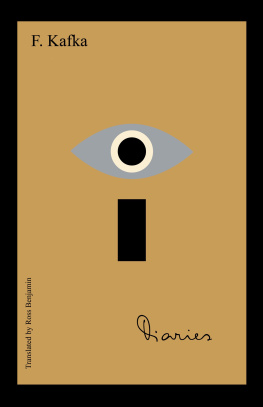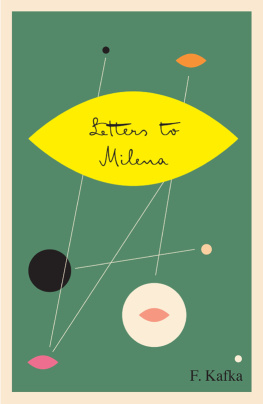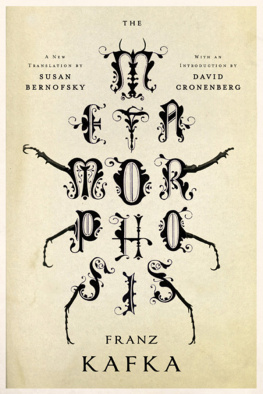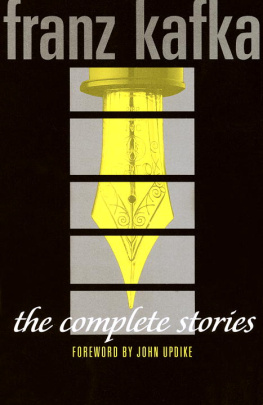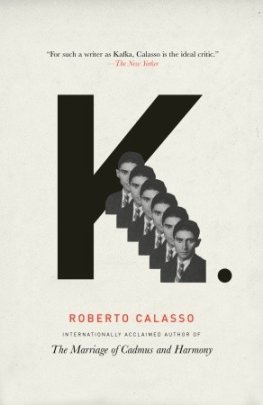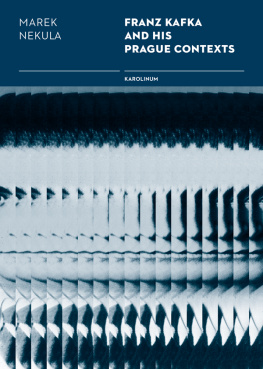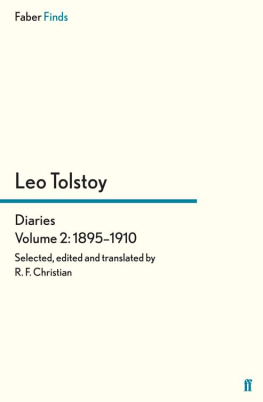Franz Kafka - Diaries, 1910-1923
Here you can read online Franz Kafka - Diaries, 1910-1923 full text of the book (entire story) in english for free. Download pdf and epub, get meaning, cover and reviews about this ebook. year: 1988, publisher: Schocken, genre: Art. Description of the work, (preface) as well as reviews are available. Best literature library LitArk.com created for fans of good reading and offers a wide selection of genres:
Romance novel
Science fiction
Adventure
Detective
Science
History
Home and family
Prose
Art
Politics
Computer
Non-fiction
Religion
Business
Children
Humor
Choose a favorite category and find really read worthwhile books. Enjoy immersion in the world of imagination, feel the emotions of the characters or learn something new for yourself, make an fascinating discovery.

- Book:Diaries, 1910-1923
- Author:
- Publisher:Schocken
- Genre:
- Year:1988
- Rating:4 / 5
- Favourites:Add to favourites
- Your mark:
- 80
- 1
- 2
- 3
- 4
- 5
Diaries, 1910-1923: summary, description and annotation
We offer to read an annotation, description, summary or preface (depends on what the author of the book "Diaries, 1910-1923" wrote himself). If you haven't found the necessary information about the book — write in the comments, we will try to find it.
These diaries cover the years 1910 to 1923, the year before Kafkas death at the age of forty. They provide a penetrating look into life in Prague and into Kafkas accounts of his dreams, his feelings for the father he worshipped and the woman he could not bring himself to marry, his sense of guilt, and his feelings of being an outcast. They offer an account of a life of almost unbearable intensity.
Diaries, 1910-1923 — read online for free the complete book (whole text) full work
Below is the text of the book, divided by pages. System saving the place of the last page read, allows you to conveniently read the book "Diaries, 1910-1923" online for free, without having to search again every time where you left off. Put a bookmark, and you can go to the page where you finished reading at any time.
Font size:
Interval:
Bookmark:
THE text of the Diaries is as complete as it was possible to make it. A few passages, apparently meaningless because of their fragmentary nature, are omitted. In most instances no more than a few words are involved. In several (rare) cases I omitted things that were too intimate, as well as scathing criticism of various people that Kafka certainly never intended for the public. Living persons are usually identified by an initial or initials - that is, when they are not artists or political figures who because of their public activity must always anticipate criticism. Although I have used the blue pencil in the case of attacks on people still alive, I have not considered this sort of censorship necessary in the little that Kafka has to say against myself (partly in lighthearted playful mockery, and partly in earnest). The reader himself will know how to correct the false impression naturally arising out of this, that I was the only person against whom Kafka harboured anything. On this, as on many other points, I have followed the example of V. Chertkov in his editing of Tolstoy's diaries (cf. Chertkov's preface to that edition).
One must in general take into consideration the false impression that every diary unintentionally makes. When you keep a diary, you usually put down only what is oppressive or irritating. By being put down on paper painful impressions are got rid of. Pleasant impressions for the most part do not have to be counteracted in this way; you make note of them, as many people should know from experience, only in exceptional cases, or when (as in the case of a travel diary) it is your express purpose to do so. Ordinarily, however, diaries resemble a kind of defective barometric curve that registers only the lows, the hours of greatest depression, but not the highs.
This rule also holds true for the thirteen quarto notebooks that constitute Kafka's true diary. In the Travel Diaries' of the same period a relatively brighter mood prevails. His good humour is seen with even more distinctness in his letters. A gloom begins to settle on the letters only as his illness grows worse, though then, to be sure, they are coloured the deepest black of despair. For the most part, however, one can distinguish forms of personal utterance (each of his literary works, of course, runs the gamut of the scale): the quarto notebooks show up as the darkest band of the spectrum; his travel notes are somewhat brighter; many of the letters (roughly, until the Ziirau period, and even into it) are brighter still; in his conversations and daily intercourse there was often - even most often, during the early periods of his life - a gay ingenuousness one would scarcely credit to the author of the Diaries.
The bulk of the Diaries is contained in thirteen notebooks of quarto size.
The first, third, fourth, and fifth notebooks Kafka numbered himself, in Roman numerals (the second notebook bears no number). Pages are numbered consecutively throughout, although a second pagination, also by Kafka, makes for some confusion. There was a further difficulty in arranging the material chronologically in the fact Kafka would occasionally, in the same notebook, write from the last page backwards as well as from the first page forwards, so that the entries met in the middle. Nevertheless, it was possible to establish the correct chronological order.
The first notebook begins with several undated entries. The first date noted is 17-18 May 1910. A few pages later there are entries for the period from 19 February 1911 to 24 November 1911. Notebook II, embracing the period from 6 November 1910 to May 1911, fills in the interval between May 1910 and February 1911, and also contains part of the first chapter of Amenka, The Stoker. Notebook III goes from 26 October 1911 to 24 November 1911. Thus the first three notebooks dovetail - what is also the case with Notebooks VIII and IX. Notebook IV embraces the period from 28 November 1911 to the end of that year; Notebook V (in which several obviously erroneous dates had to be corrected) goes from 4 January 1912 to 8 April 1912; Notebook VI from 6 May 1912 to September 1912. Notebook VI contains The Judgement' and the second part of The Stoker. After an interval the diary is continued in Notebook VII from 2 May 1913 to 14 February 1914, and in Notebook VIII from 16 February 1914 to 15 August 1914. Notebook VIII, however, also contains (beginning on the last page and going backwards) entries for the month of February 1913, and Notebook IX belongs to the period covered by the eighth notebook. Many pages have been torn out of the ninth and tenth notebooks. The latter notebook goes from 21 August 1914 (thus it follows directly after Notebook VIII) to 27 May 1915. Notebook XI contains entries for the period from 13 September 1915 to 30 October 1916, as well as a few from April to August 1917. Notebook XII, many of whose pages likewise were torn out by the author, begin in Ziirau on 15 September 1917 and goes to 10 November 1917; after a lengthy interval it resumes with the entry of 27 June 1919, continuing on until 10 January 1920. The last - the thirteenth - notebook embraces the period between 15 October 1921 and November 1922, and also contains a few notes dated 12 June 1923. A part of the incomplete Investigations of a Dog (not the beginning, however) is sketched out in it in minuscule characters. In the earlier notebooks (the first eight) Kafka writes a large and swinging hand; later it gradually grows smaller and pointed.
These thirteen notebooks form a stylistic whole that I have tried to preserve. The writer notes down literary ideas, the beginnings of stories, or reflections passing through his head. The principles that guide him; the manner in which he looks to his literary efforts for a counterweight against the unfriendly world around him; the hated, arduous, indeed exhausting job - all this is repeatedly shown in detail in the entries themselves. In addition to the inspiration of his imagination, Kafka notes down occurrences in the workaday world, and also dreams -there are sketches where dreams predominate over relatively realistic' entries; often they are the starting-point for literary creation. In exceptionally happy cases the result, whether long or short, is a finished literary work in every respect. From these Kafka later chose a few for publication; they are to be found in Vol. I of the Gesatnmelte Schriften. In the context of the Diaries an unexpected light is very often cast on the content of these pieces.
Thus, amid daily notations which served the writer as a kind of springboard for literary creation, one sees many things that could have been published as independent fragments. One has the half-finished figure and the unworked marble before one at the same time.
These thirteen quarto notebooks thus have a composition different from the blue octavo notebooks, which are made up almost entirely of literary ideas, fragments, and aphorisms (without reference to the everyday world). The octavo notebooks will be included in a future publication. Notations of a diary nature, dates, are found in them only as a rare exception. The three Travel Diaries, on the other hand, have an entirely different character again: occurrences and experiences are noted in bare matter-of-fact fashion, in a way that would apparently provide no starting-point for later work - just as a tourist would do. Of course, this tourist is Franz Kafka, and though his manner of observing things seems thoroughly natural, in a mysterious way it departs from everything customary.
Both - the bare factual and the partially wrought (which in happy cases became a finished work) - are uniquely mingled in the thirteen notebooks.
MAX BROD
Tel Aviv, 1948
*Published in translation under the title of
Font size:
Interval:
Bookmark:
Similar books «Diaries, 1910-1923»
Look at similar books to Diaries, 1910-1923. We have selected literature similar in name and meaning in the hope of providing readers with more options to find new, interesting, not yet read works.
Discussion, reviews of the book Diaries, 1910-1923 and just readers' own opinions. Leave your comments, write what you think about the work, its meaning or the main characters. Specify what exactly you liked and what you didn't like, and why you think so.


